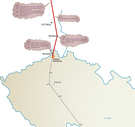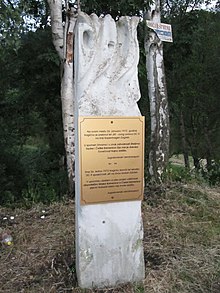
An aviation accident is defined by the Convention on International Civil Aviation Annex 13 as an occurrence associated with the operation of an aircraft, which takes place from the time any person boards the aircraft with the intention of flight until all such persons have disembarked, and in which (a) a person is fatally or seriously injured, (b) the aircraft sustains significant damage or structural failure, or (c) the aircraft goes missing or becomes completely inaccessible. Annex 13 defines an aviation incident as an occurrence, other than an accident, associated with the operation of an aircraft that affects or could affect the safety of operation.
Jat Airways was the national flag carrier and largest airline of Yugoslavia and later Serbia and Montenegro and Serbia. Founded in 1927 as Aeroput, the airline ceased operations during World War II. After resuming flights in 1947, the airline was renamed Jugoslovenski Aerotransport on 1 April 1947. The airline was renamed again on 8 August 2003. Jat Airways and their predecessors were one of the oldest airlines still in operation. Flight operations were based at Belgrade Nikola Tesla Airport, and the airline operated scheduled services to 72 international destinations, outside the areas formerly part of Yugoslavia, as well as charters and wet leases. Jat Airways was owned by the government of Serbia and had 1,250 employees.

Czech Airlines is the flag carrier of the Czech Republic. Its head office is located in the Vokovice area of Prague's 6th district and its hub is Václav Havel Airport Prague. The company mainly operates scheduled flights, serving two destinations as of 2024.

Vesna Vulović was a Serbian flight attendant who survived the highest fall without a parachute: 10.16 kilometres or 33,330 feet. She was the sole survivor after an explosion tore through the baggage compartment of JAT Flight 367 on 26 January 1972, causing it to crash near Srbská Kamenice, Czechoslovakia. Air safety investigators attributed the explosion to a briefcase bomb. The Yugoslav authorities suspected that émigré Croatian nationalists were to blame, but no one was ever arrested.
This is a list of aviation-related events from 2003.
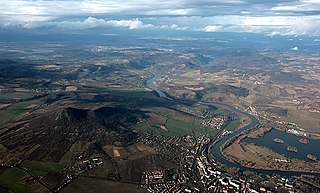
Ústí nad Labem Region or Ústecký Region is an administrative unit of the Czech Republic, located in the north-western part of the historical land of Bohemia, and named after the capital, Ústí nad Labem. It covers the majority of the former North Bohemia province and is part of the broader area of North Bohemia.
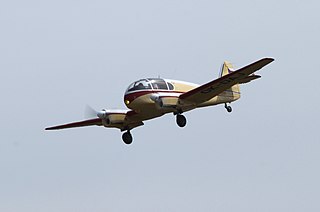
The Aero 45 was a twin-piston engined civil utility aircraft produced in Czechoslovakia after World War II. Aero Vodochody produced the aircraft in 1947–1951, after which the Let Kunovice rolled out these planes until 1961. In 1958 the Ae-45S became the first Czechoslovak plane to cross the Atlantic Ocean. It was the first product of the nation's postwar aviation industry and proved a great success, with many of the 590 produced being exported.

Srbská Kamenice is a municipality and village in Děčín District in the Ústí nad Labem Region of the Czech Republic. It has about 300 inhabitants.

The Czechoslovakia men's national ice hockey team was the national ice hockey team of Czechoslovakia, and competed from 1920 until 1992. The successor to the Bohemia national ice hockey team, which was a European power prior to World War I, the Czechoslovak national team first appeared at the 1920 Summer Olympics, two years after the creation of the state. In the 1940s, they established themselves as the best team in Europe, becoming the first team from the continent to win two World Championships. After the arrival of the Soviet Union on the international hockey scene in the 1950s, the Czechoslovaks regularly fought Sweden and Canada for silver and bronze medals, and sometimes beat the Soviets. In total, they won the gold medal six times.

No. 312 Squadron RAF was a Czechoslovak-manned fighter squadron of the Royal Air Force in the Second World War.

Vršac Airfield is a small aerodrome and training facility owned and operated by the SMATSA Aviation Academy, and located in Vršac, Serbia.

Juliane Margaret Beate Koepcke, also known by her married name Juliane Diller, is a German-Peruvian mammalogist who specialises in bats. The daughter of German zoologists Maria and Hans-Wilhelm Koepcke, she became famous at the age of 17 as the sole survivor of the 1971 LANSA Flight 508 plane crash; after falling 3,000 m (10,000 ft) while strapped to her seat and suffering numerous injuries, she survived 11 days alone in the Peruvian Amazon rainforest until she was rescued by local fishermen after finding their camp.

Czechoslovak Airlines Flight 001 was an Ilyushin Il-18B four engine turboprop airliner, registered OK-NAB, which was operating as a scheduled domestic passenger flight from Prague's Ruzyně airport to Bratislava-Ivanka Airport, both in Czechoslovakia, which crashed into the Zlaté Piesky Lake while attempting to land in Bratislava on July 28, 1976. All 6 crew members and 70 out of 73 passengers died.

Praga E-39/BH-39 was a Czechoslovak trainer aircraft.

Falling is the action of a person or animal losing stability and ending up in a lower position, often on the ground. It is the second-leading cause of accidental death worldwide and a major cause of personal injury, especially for the elderly. Falls in older adults are a major class of preventable injuries. Construction workers, electricians, miners, and painters are occupations with high rates of fall injuries.
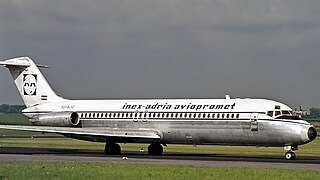
Inex-Adria Aviopromet Flight 450, JP 450, was an international charter flight from Tivat in the Socialist Federal Republic of Yugoslavia to Prague, Czechoslovakia which crashed in the Prague suburb of Suchdol on October 30, 1975, at 09:20 AM. The McDonnell Douglas DC-9-32 with 115 passengers and 5 crew on board descended, under Instrument Meteorological Conditions (IMC), below defined Minimum Descent Altitude (MDA) during the final approach to Prague Ruzyně Airport RWY 25, entered a gorge above Vltava river, and was unable to outclimb the rising terrain. 75 of the 120 occupants died during the crash itself while 4 others died later in hospital. The accident remains the worst aviation disaster on the Czech Republic soil.

ČSA Flight 523, operated by an Ilyushin Il-18D, was a scheduled flight from Prague Ruzyně International Airport (PRG/LKPR), Czechoslovakia to Havana via Shannon Airport and Gander International Airport, with 69 people on board, on 5 September 1967 it crashed on climb-out from Gander.
This article includes information on terrorist acts and groups in or against the Kingdom of Yugoslavia (1918–45) and Federal Yugoslavia (1945–92). Many of the terrorist acts were carried out outside Yugoslavia against Yugoslav subjects. The post-war period until circa 1985 was marked by frequent terrorist attacks on Yugoslav institutions organized by extremist emigrant organizations. Between 1962 and 1982, they carried out 128 terrorist attacks against Yugoslav civilian and military targets.
This article attempts to list of the highest falls survived without a parachute. Some heights are difficult to verify due to lack of documentation and are approximated.


